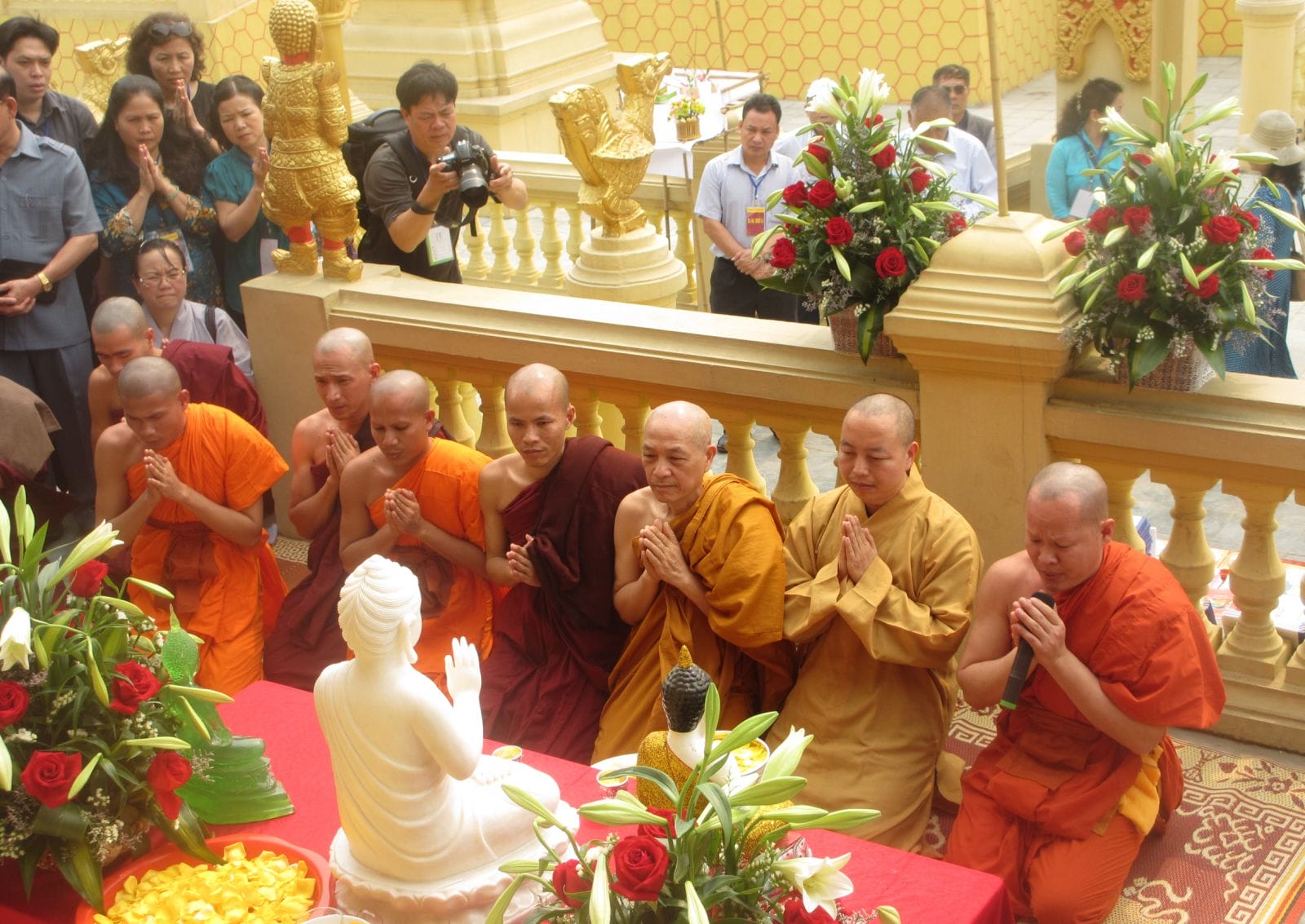This holiday is the New Year festival in ancient calendar of Khmer people. Held in mid-April, the festival occurs in 3 days (4 days for leap year).People prepare new clothes, food and drinks for whole festival days. They also repair, clean and decorate their house. Everyone is excited to care for holiday.
This holiday is also called Chol Chnam Thmay (or Chaul Chnam Thmay). It is the New Year festival in ancient calendar of Khmer people. Held in mid-April, the festival occurs in 3 days (4 days for leap year). Each festival day has a different name: The first day is named “Moha Songkran” (or Chol sangkran Chmay); the second day is named “Wanabat” (or Wonbof); the third day is named “Tngai Laeung Saka” (or Lom Sak); the fourth day (only in leap years) is also named Wonbof. In this holiday, people usually visit each other, wish each other fortune, health, prosperity and join many fun games together.
People prepare new clothes, food and drinks for whole festival days. They also repair, clean and decorate their house. Everyone is excited to care for holiday.
At night of eve, every family prepares a lavish meal, burns incense and candles to welcome new god, farewell the old god. On the altar, they present 5 flower branches, 5 candles, 5 incense, 5 cereal seeds and fruit crops. They pray for health and luck in the New Year.
Chol sangkran Chmay day is the first day of calendar procession ceremony. Major activities are bathing, dressing nice, bringing sacrifice gifts to the temple in good time which has been selected. People bring sacrifice gifts such as incense, flowers and fruits to the temple and put them on gilded trays. After doing palanquin procession ceremony, they chant to welcome a new year.
On Wonbof day, they make rice offerings and cover the sand mountain. People cook rice and bring it to the temple in the morning and the afternoon. In the afternoon, they hold the sand mountain covering ceremony to pray for love.
On Lom Sak day, they do Buddha bathing and monk-bathing ceremony. In the morning, people bring breakfast to monks and listen to the sermon. At noon, they burn the lamps, offer sacrifice gifts and bring fragrant water to bathe Buddha statues. After the ceremony at the temple, the monks go to the grave to pray for the souls of those who died. Then they go home and do Buddha bathing ceremony at their own home in order to receive forgiveness for the mistakes in the previous year.
